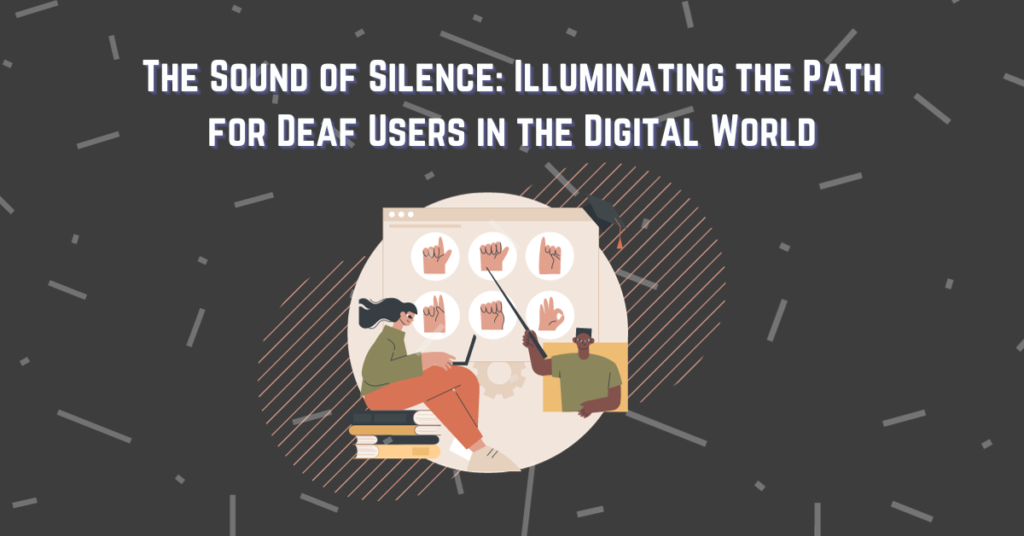Introduction

The digital world, in its essence, is a symphony of information, a concert where data, ideas, and connections harmoniously intertwine. But what if this symphony is experienced differently? What if it’s not heard but seen or felt? For deaf users, navigating the digital world can present unique challenges. However, innovations in technology and a growing awareness of accessibility are beginning to change the tune. Let’s explore how these innovative approaches are supporting deaf users online, turning the sound of silence into a melody of inclusivity.
Understanding the Challenges
Before we dive into the solutions, it’s important to understand the unique challenges deaf users face online. From auto-generated captions that miss the mark to videos without sign language interpretation, the internet can often feel like it’s designed for the hearing. But change is on the horizon.
Innovative Approaches to Supporting Deaf Users Online
Improved Closed Captioning
One of the most significant strides in making the internet more accessible for deaf users has been improvements in closed captioning. AI and machine learning are being used to create more accurate and real-time captions for videos, making content more accessible and understandable.
Sign Language Recognition and Translation
Innovations in sign language recognition and translation technology are breaking down barriers like never before. AI-powered tools can now interpret sign language in real-time, translating it into text or speech, and vice versa. This opens up a whole new world of communication possibilities.
READ: Closed Captions: 4 Benefits Why You Should Have Them in Your Videos
Visual and Haptic Feedback
Visual and haptic feedback are also playing a crucial role in making the internet more accessible. Notifications, updates, and prompts can be communicated through visual cues or vibrations, ensuring deaf users don’t miss important information.
Designing for Deaf Users in the Digital World: Best Practices
While technology plays a significant role, making the internet more accessible for deaf users also requires thoughtful design practices. This includes:
- Providing text alternatives for audio content
- Ensuring websites are easy to navigate without sound prompts
- Making sure videos are either signed or captioned accurately
- Using visual cues and haptic feedback effectively
Final thoughts: Crafting an Inclusive Digital Future
The sound of silence in the digital world is no longer a barrier but a call to action, a reminder that accessibility must be at the forefront of our digital evolution. As technology continues to innovate and our awareness of accessibility grows, we’re creating a symphony that everyone can appreciate, in their own unique way.
From improved closed captioning to groundbreaking sign language translation, the tune of progress is loud and clear. And as we continue to compose the future of our digital world, we must remember to craft a melody that resonates with all, regardless of how they experience the concert of the internet. After all, in a truly inclusive digital world, everyone deserves a front-row seat.
READ: Step-by-Step Tutorial: Adding Closed Captions in Camtasia

